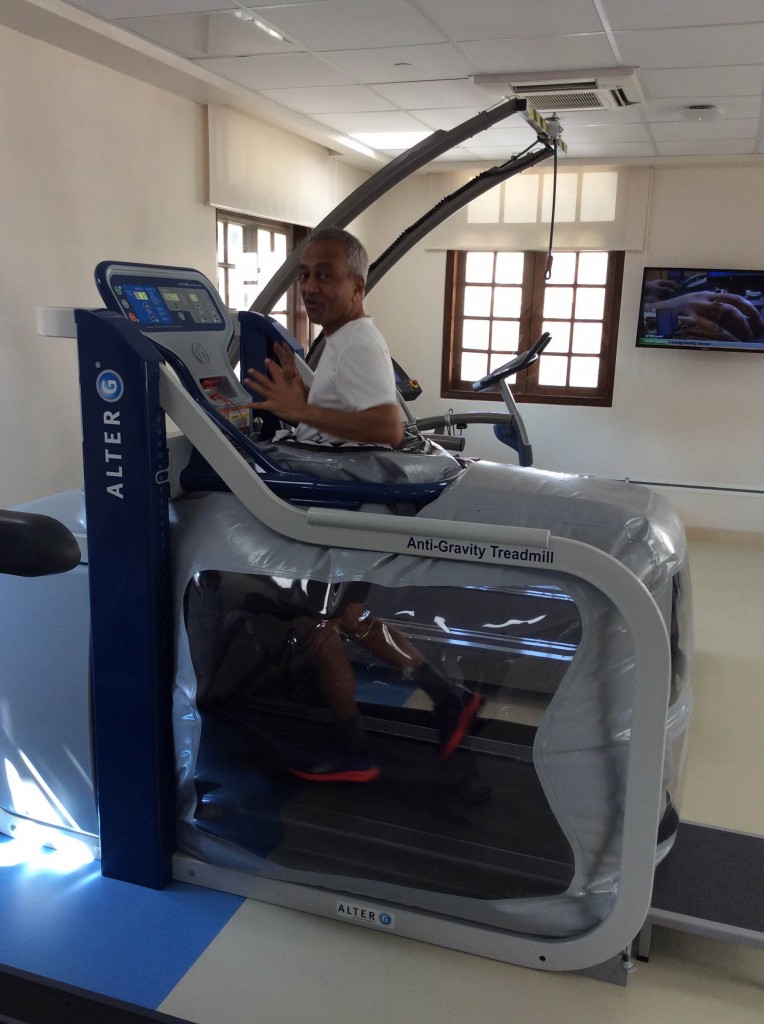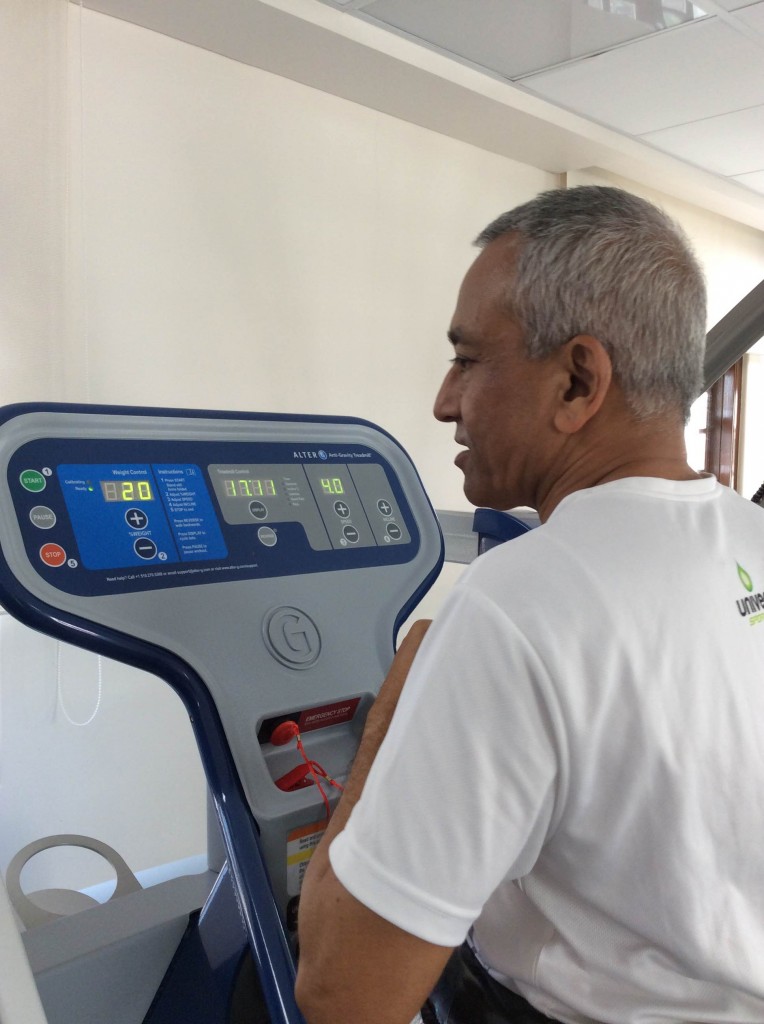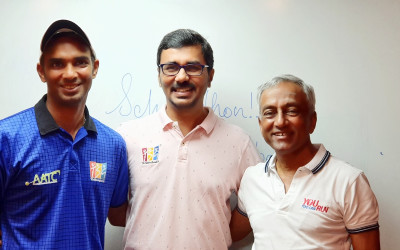AlterG – Testing the anti-gravity treadmill
Folks,
I had occasion to test the anti-gravity treadmill, AlterG at the Sir HN Reliance Foundation hospital at Opera House last week.
As many of you probably know, the hospital has been taken over and refurbished by the Mukesh Ambani group and is now a super special place. As part of its capabilties it has, what is probably one of the best sports medicine facilities in the country.
Under one roof there is probably the first time collection of the finest facilities for sports medicine and rehab of all varieties. Some of the features that I saw were
Gait analysis room : A large room with cameras all around on the walls and the floor. The floor itself has a pressure pad. The physio sitting in the control room can study the gait from different angles and draw analysis.
Underwater Treadmill: No..the treadmill is not dunked underwater. But rather you stand on the treadmill and on all four sides there is a glass wall that gets filled with water. So you are basically standing in the water and running / walking on the treadmill. The water serves two purposes. One is to offer resistance and the second is to buoy your bodyweight up.
AlterG – AntiGravity Treadmill: This is the one that I chose to do my test run in. The purpose of this treadmill is to simulate various levels of weight percentages of the runner. So in effect it tries to negate the effects of gravity and hence the generic name.
To know more about the treadmill see this video from the manufacturers.
Getting started: I was instructed to get into my running shorts and then handed the special ‘skin shorts’ to wear on top of it. I chose the small size and pulled it up. The lower part is like the skins we runners are familiar with. The waist has a flared opening that is lined with a large plastic zip at the edges. When worn it looks like a ballerina tutu dress. I got enough ribbing on FaceBook for it already  One of the things that happened to me was that the running shorts got scrunched into my groin. It is desirable to get into it with only underwear / racing skins to avoid any wardrobe malfunction later on.
One of the things that happened to me was that the running shorts got scrunched into my groin. It is desirable to get into it with only underwear / racing skins to avoid any wardrobe malfunction later on.
Getting lowered: The treadmill itself has a plastic bag / cavity into which you need to get into. Since there were handrails, I could hold them and lift myself up and step into the center of the plastic bag. If however one is obese then a stool may have to be provided to get this done.
Zipping up: The cavity bag has a zip around it and the zip on the edge of your ballerina tutu gets paired and your get zipped around. When this is achieved, what you have is basically a plastic bag / sack around your waist.
Starting off: The treadmill is start slowly. This is advisable since it takes some getting used to having a zipped bag around your waist. It took me about 3-4 minutes of walking to feel comfortable. I also noticed during this period that there was a ‘yaw’ in my gait. But at higher speed this disappeared and my gait was then normal.
Picking up speed: Soon the pace was increased in bits…soon I was doing 8 kmph very comfortably, my standard aerobic pace.
Altering the Gravity: The machine calibrates itself to100% when you start. This means that 100% of your body weight is being transferred to the feet. But as soon as I settled into my normal easy pace, the machine was adjusted to 80%. So what this means is that if I was 60 kgs then my loading was as if I was 48 kgs. It surprisingly did not feel any different and did not make any difference to my effort intensity. The settings were played around with and it could go as low as 20%. At this stage I was lifted off and my feet were kind of still running in normal gait, but with minimal effort. Wish all running was like this 
Gait Analysis: After playing around with speed and gravity settings we got into the serious business of why I had gone there. Basically to do a good gait analysis of my running style. The plastic bag has clear plastic on all sides. This enabled the admirably talented physio to view my gait at difference angles, different levels of gravity and at different paces.
How this helps is that when the weight is reduced, the gait and the foot landing can be seen at a more granular level then when the full body is loaded at each foot strike. Also the entire kinetic chain can be analysed from the glutes medius onwards and studied without any loading on them. This helps to study the inherent issues while not being loaded during the run.
The analysis is only as good as the team member that does it. I must give credit to her that she had a sharp eye and well skilled, having had good work experience under one of the country’s most leading sports physician.
My diagnosis was
– My gait is perfect. But I am a little hamstring emphatic in my stride. This was correctly identified.
– My arm swings too much away and is in an abducted postion. I was advised to adduct it so as to achieve better form closure. Good point.
– As my pace increases, my pelvis tends to lose its neutral position. This results in a a progressive heel strike. Need to work on keeping that core engaged.
The entire test took about 30 minutes and I stepped off the treadmill and ‘un-tutued’ myself.
I am happy that I got myself a gait analysis done in one of the most hi–tech ways to do it.





Leave a Reply